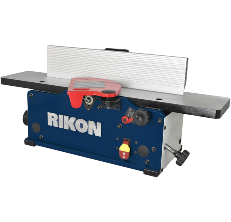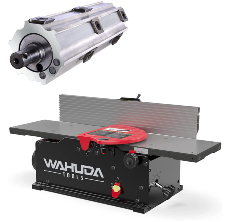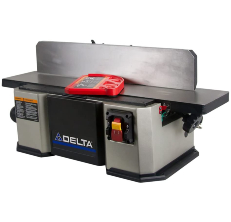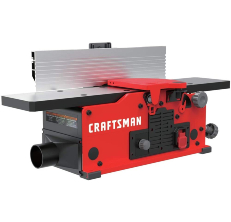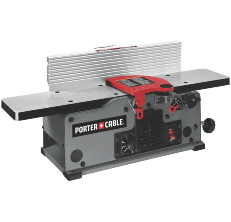Best Benchtop Jointer to Upgrade Your Workshop
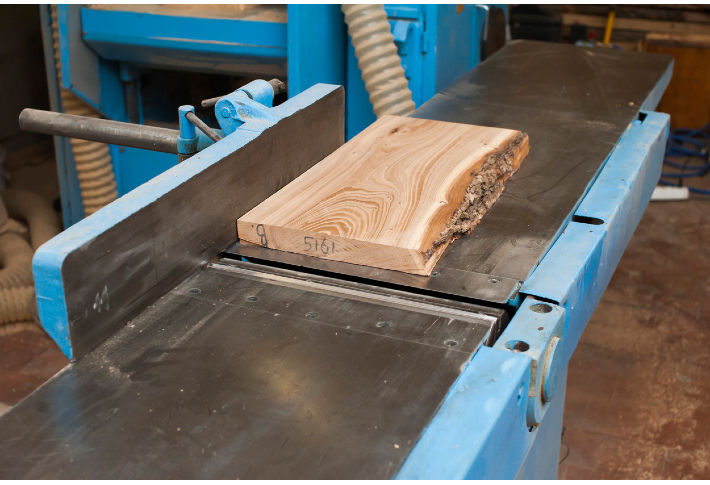
When it comes to essential workshop tools, benchtop jointers have to rank in the top five. Having one of these tools can make a huge difference in the quality and efficiency of your work taking it from slow and imperfect to quick and straight as can be. These tools are great alternatives to the more massive simple jointer that would take a large workshop to house. So today we’re going to be exploring what are the best benchtop jointers in 2024 as well as everything you need to know to choose the one that best suits your personal needs. Let’s dive in!
Our Top Picks
- Best Overall: RIKON Benchtop Jointer Shop Now ➔
- Runner Up: Wahuda Benchtop Wood Jointer Shop Now ➔
- Honorable Mention: Delta Benchtop Jointer Shop Now ➔
- Also Consider: CRAFTSMAN Benchtop Jointer Shop Now ➔
- PORTER-CABLE Benchtop Jointer Shop Now ➔
Best Benchtop Jointers Worth Considering for 2024
Best Overall
An affordable jointer that comes with a smooth straight cut out of the box, this RIKON power tool is surprisingly well engineered and offers great performance. It’s the perfect size for a small workshop and it will really deliver despite its compact size. The fence will work best at 90 degrees but most hobbyists we know will be more than pleased with that.
Pros
- Variable speed rate
- Cutter head lock for easy knife replacement
- Solid center casting for stability
Cons
- Not suitable for professionals
Key Features
Cut 1/16th to 1/8th of an inch for best results and leverage the adjustable speed for more control over the process. All in all, this is one of the best machines you can get in this price range and it will serve you well for a long while.
Runner Up
The Wahuda 6 inch benchtop wood jointer doesn’t claim to be the ideal tool for a large workshop or a professional environment. At 6 inches, it simply lacks the bench space. But it is ideal for beginners or hobby woodworkers who are looking to upgrade their workshops with a tool that does a great job quickly and efficiently.
Pros
- Spiral cutter head for a smooth silent cut
- Small enough to be portable – ideal for small shops
- Easily adjustable fence
Cons
- Unsuitable for larger projects
Key Features
Sporting an easily replaceable spiral cutter head that will last you longer than most straight knife cutter heads, this tool is portable and powerful. Once you have the fence set up you can get to work and it will start delivering perfect 90 degree angle cuts you can be proud of.
Honorable Mention
A sturdy tool made from cast iron, this jointer is in it for the long haul. Easy to set up and once you get it going it will deliver in spades. The depth of the cut goes as low as 1/8th of an inch and the power is undeniable. Easily adjust the fence bet from 90 to 45 degrees and enjoy the clean cut and lack of vibration.
Pros
- High quality engineering ensured precision
- Easy fence adjust system
- Sturdy construction improves precision and reduces vibration
Cons
- Higher price point
Key Features
The jointer comes pre-calibrated but making the adjustments is a breeze anyway. A more expensive unit that delivers like it’s in a higher price range, if you have the budget you won’t go wrong with this one. Superior precision and engineering and more stability and weight.
Also Consider
A budget friendly jointer that will provide stability and power the craftsman jointer is stable enough out of the box to only need some tinkering before getting down to business. You’ll get good use out of this machine and you’ll be able to work without getting clogged or frustrated with sanding. This unit has excellent dust collection capabilities that will keep your work area visible and breathable.
Pros
- Variable speed range from 6,000 to 11,000 RPM
- Easily replaceable cutterhead knives
- Powerful motor that can handle soft and hard wood alike
Cons
- Straight knife cutter head will need more frequent sharpening
Key Features
Offering great performance, the Craftsman benchtop jointer is sturdy enough to reduce vibration and increase precision. Unless you’re working significantly larger projects or you’re ready to increase your budget significantly, this is a great option for the range. Make sure to properly square up the fence and set the out feed and in feed table before first use for the best experience.
One of the most popular jointers in its range, the Porter Cable impresses with its out of the box precision, the quality of its materials and its ease of use. Putting it together involves no hassle and once adjusted you will enjoy one of the best cutting experiences you ever have. Flawless and perfectly straight, this machine can handle however much wood you throw at it and it will keep moving.
Pros
- Two knife cutter with easy replacement and sharpening
- Sturdy center mounted fence
- Can be attached to a vacuum for proper dust control
Key Features
Easy to move around your workshop, smooth to operate and not even all that loud, this tool will allow you to adjust the depth of cut as low as 1/128 of an inch which is remarkable precision that gives you unparalleled control. Lives up to the hype as one of the best models out there for beginner woodworkers.
Best Benchtop Jointers Buying Guide
What Should You Consider Before Buying a Benchtop Jointer?
Benchtop jointers can be very useful in both hobbyist and professional workshops but what do you need to know before choosing the right one for your needs? Here are a few aspects to keep in mind.
Capacity
The capacity of a jointer is important because it’s the feature that will dictate what size of workpiece you will be able to flatten using this power tool. This is measured from the edge of the table to the start of the fence – which can be adjusted if you choose to work on a smaller piece, of course. The standard cutter head sizes for jointers are 6 inches, 8 inches, 10 inches, 12 inches, and 16 inches.
Although the larger the capacity, the better, once you get to 10 inches and up, jointers start to cost in the thousands of dollars. For beginners, enthusiasts, and hobbyists 6 or 8-inch jointers should provide enough space for most of their projects.
Another important aspect that plays into the capacity is the length of the table. Typically 6-inch jointers will have table lengths of between 50-60 inches while 8-inch ones will go a bit about 80 inches. If you’re wondering what’s right for you, consider the size of the wood you work with. Usually, if the length is twice the size of the length of the wood, you should be able to work efficiently and comfortably.
Cutter head style
The cutter head on a jointer is another feature to watch out for. There are a few types but here are the main ones to keep in mind.
- Straight knives
These are going to be the most and cheapest types of cutter heads and they work just fine. They’re made of solid steel and are durable enough but the disadvantage to straight knives appears when it comes to replacing them. The process is tedious and can be frustrating if you lack the experience. Aligning the straight knives back correctly will take some sweat and quite a bit of patience. If you’re unsure of yourself, speak to a professional or splurge for a different type of cutter head.
- Spiral inserts
A step up from the straight knives, spiral inserts are easier to sharpen and more silent during use. If one edge becomes dull you can actually spin them to the next one, and once you’ve gone through all four sides you can easily take out the screws and give them a quick sharpening. These will be more expensive but save you quite some hassle.
The fence
The fence is a key feature as well. In this department bigger, or well, taller is better. Fences are the elements that ensure that you’re able to accurately square the edge and the face of the wood which is the reason the jointer is such an important tool in the first place. With fences, tall and straight are the main orders. Make sure that the fence is straight along its own length as soon as you have it out of the box. Additionally, take some time to check that it’s perfectly perpendicular to the table at multiple points, as frequent use can cause it to loop.
The fence is also usually adjustable which allows you to make edge cuts at an angle although most of your work will likely be strictly 90 degrees.
Mobility
Some jointers will come with their own wheels while others won’t. You’ll quickly find that you’ll have to build one yourself if it doesn’t come with the unit. Jointers are great tools, but the benchtop variety that we’re interested in should be able to be hauled out and put back in its place without crowding up your workshop.
Cutting depth
This is a very self-explanatory feature but it’s worth mentioning especially for those just starting out. The lower the cutting depth, the more passes the wood will need before reaching its desired form. Once you’ve got the hang of things, a lower cutting depth can mess with your work efficiency. However, before that happens, make sure to make your own experiments and see what various depths look like on a scrap piece of wood.
Wedge bed jointer
Wedge bed jointers have the center casting in the shape of a triangle. This is the most common and economical type, both in terms of space and price. The infeed and outfeed table get adjusted up and down by moving along the slopes. Some people warn that the ends of the tables can sag over time in this type of configuration, but this has not been a problem we’ve encountered, so for hobbyists, this type of tool should not pose any issues.
Parallelogram jointers
This type of jointer is more massive and the infeed and outfeed table have more support from the center casting which is longer. The vertical adjustment for this type of machine happens on a couple of parallel braces inside the center casting.
Dust collector
Although it might seem like a small detail to mention, depending on how much wood you’ll be working with, this can turn from a nuisance to a problem. Make sure that you find a way to integrate your jointer with your existing dust collection and removal system. A clean shop is the best way to keep safe and work efficiently.
Workshop size
A 16-inch jointer is an expensive dream that few can afford but money isn’t the only object. Your jointer has to fit your shop. Check out the dimensions of the tool you’re looking to purchase and as mentioned keep mobility in mind. You won’t always place the jointer in the exact spot you’ll be using it, nor should you. This is a heavy machine and being able to quickly roll it out and back in its place is an important feature.
How To Use a Benchtop Jointer
This video from Shopfix will teach you how to use a benchtop jointer if you don’t already know how:

People Also Asked
Is a benchtop jointer worth it?
Yes, benchtop jointers are excellent tools even for beginners and hobbyists to own. They will make woodworking more efficient and precise showing clear advantages over hand planing or processing lumber on a router table.
What is a bench jointer for?
The jointer is used to perfectly flatten out the face of a workpiece as well as square the edge. It’s a valuable tool that can greatly enhance the quality of your woodworking.
What is the maximum cut for jointing an edge?
The maximum cut per pass should be ⅛ of an inch. If the wood still needs smoothing out, feed it through the jointer again, until it’s level.
When using a jointer should you stand?
For safety and efficiency reasons you should always stand by the cutter head when operating a jointer. This allows you to comfortably pass the wood through the jointer without risking injury.
Article Contributors
The Woodsmith Review Team’s product reviews and in-depth guides are here to help you choose the best tools and gear to build great-looking projects confidently. Woodsmith is reader-supported: When you buy through links on our site, we may earn an affiliate commission. Large language models (like Artificial Intelligence) may have been used in the research and creation of the content.
Inquiries regarding specific articles or product testing should be sent to aimperiapt@gmail.com

